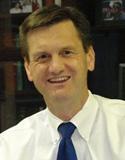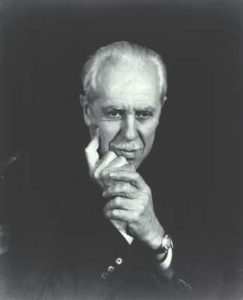NEWS: Online classes helpful, but not solution to teacher shortage, educators say
BRIEFS: Number of uninsured children in S.C. on the rise, more
COMMENTARY, Brack: Power for the people: Let’s look at how we do electricity
SPOTLIGHT: South Carolina Hospital Association
MY TURN, Davis: More energy competition needed, not less
FEEDBACK: On national unity and mail-in voting
MYSTERY PHOTO: Tell us more about this photo
S.C. ENCYCLOPEDIA: Artist Alfred Heber Hutty
NEWS: Online classes helpful, but not solution to teacher shortage, educators say

By Lindsay Street, Statehouse correspondent | South Carolina schools struggling to fill open teacher positions have turned to online instruction over the last decade to keep basic classes available to students. But as online instruction seeks more taxpayer funds, some in the state warn the option is a Band-Aid, not a solution to the state’s teacher shortage.
“To think it can replace teachers because we have a teacher shortage is a terrible idea,” S.C. Education Association President Sherry East told Statehouse Report.

Lawmakers are gearing up for a session focused on education with the teacher shortage at the forefront, according to Senate Education Committee member Brad Hutto, D-Orangeburg.
“(Online instruction is) not ideal but is it better than nothing? Is it better than having a substitute? Yes. There is a place in our classrooms with online instruction, but every child deserves a quality teacher in the classroom,” Hutto said. “I wouldn’t say it’s good but I would say it’s acceptable under certain circumstances.”
A temporary solution develops
Online instruction is coordinated through the S.C. Department of Education’s VirtualSC program, which launched in 2006. Two years later, the program was aiding schools with staffing shortages by providing classroom learning labs, which is one of three options it offers schools.
There are currently 41,449 students enrolled in VirtualSC classes who also are enrolled in a brick-and-mortar school. The other two programs rely on a certified teacher inside the classroom.
In the learning labs, each online classroom is taught by a certified teacher employed by VirtualSC, and the school only needs to provide an in-person monitor, who does not need to be certified, according to Office of Virtual Education Director Bradley Mitchell.
“It’s a good, temporary solution, especially for small, rural schools that need to bridge that gap,”
Bradley Mitchell said. VirtualSC only offers high school and some middle school courses.
Right now, there are three schools using virtual learning labs through the education department:
- Dacusville Middle School in Pickens County is offering two high school courses on computer applications and integrated business applications;
- Ridgeview High School in Richland County is offering Latin II; and,
- McCormick High School in McCormick County is offering eight total classes. McCormick recently made news for its use of virtual labs as a stopgap measure for staffing problems.
More than 6,700 teachers left their job in in the 2017-2018 school year, disproportionately affecting small and rural school districts. State education officials and its watchdog say this provides “one tool in the toolbox” toward tackling the problem, which tends to affect small and rural school districts worse.
But online instruction is limited to middle and high school students, so it doesn’t help where the state has its most critical need in the teacher shortage: elementary school, said Education Oversight Committee Executive Director Melanie Barton.
“(With) online, you can’t do 4-year-olds and 5-year-olds. They need a person in teaching reading,” Barton said. “In the early grades, you need the teacher one on one … (This) is where we still have a big issue with the shortage.”
Critics of online instruction also questioned whether small or rural school districts have the infrastructure available to facilitate online learning, but Mitchell said that has become less of an issue at most schools.
“The schools have been great in providing time and space for people to work in their computer labs, and we’re not seeing a whole lot of issues,” Mitchell said.
Program wants to expand
VirtualSC has sought to expand in recent years, but has not received funding from the General Assembly. Mitchell said he would like to add staff to the program to expand it, but the $5 million request has yet to earn legislative approval over the years.

S.C. Sen. Greg Hembree, R-Horry, is positioned to be the next chair of the Senate Education Committee. He said he has been boning up on education issues prior to the start of session, so should he be named chair of that committee he can “hit the ground running.”
“(Online instruction) is no more a silver bullet in addressing the problem. It’s just one tool that has been effective and it can be expanded upon,” Hembree said. He called McCormick High School’s decision to offer so many courses through VirtualSC “wise.” “It’s part of getting to a better place.”
Hembree likened adding $5 million to the program to finding pennies in the couch cushions, given the size of the state budget, which tipped $8 billion this fiscal year.
Hutto said that while the program has been helpful and is a “better alternative” than not having a class, he questions offering an entire course as online.
“We need to pay our teachers more; we need to recruit more teachers by offering incentives for their schooling,” Hutto said. “This online option is a part of the overall picture but a very small part … I don’t want everyone to think this is the wave of the future. That’s not the best way to teach.”
- Have a comment? Send to: feedback@statehousereport.com
NEWS BRIEFS
BRIEFS: Number of uninsured children in S.C. on the rise, more

By Lindsay Street, Statehouse correspondent | There were an estimated 10,000 more children uninsured in South Carolina in 2017 than in 2016, according to a new report released by the Georgetown University Center for Children and Families.
The number increased from 50,000 uninsured children in 2016 to 60,000 uninsured children in 2017. This was after the state’s rate of uninsured children dropped from 12.1 percent in 2008 to 4.3 percent in 2016, only to ratchet back up to 5.1 percent in 2017, the analysis of U.S. Census data shows.
“The loss of health coverage could have a profound impact on our most vulnerable children,” South Carolina Appleseed Legal Justice Center Director Sue Berkowitz said in a press release this week. “When their health needs are met, they are more likely to attend school regularly, graduate and earn a decent living.”
The state’s increases come as more than 276,000 children nationally joined the ranks of the uninsured last year, the first significant increase in nearly a decade. Three quarters of children who lost coverage live in states that, like South Carolina, have not expanded Medicaid to working families.
South Carolina’s child uninsured rate increased at quadruple the rate of states that have expanded Medicaid. It is one of nine states that saw statistically significant increases between 2016 and 2017, according to the most recent data. Those states include South Dakota, Utah, Texas, Georgia, Florida, Ohio, Tennessee and Massachusetts.
Also in recent news:
![]() Report cards issued. South Carolina schools got mixed reviews on the new report cards issued by the S.C. Department of Education. The bad news? About 43 percent of diploma earners last school year were deemed college-ready, and 66 percent were deemed career-ready — and the state’s graduation rate has declined. But some education leaders are already pushing back, saying the report cards could be misleading.
Report cards issued. South Carolina schools got mixed reviews on the new report cards issued by the S.C. Department of Education. The bad news? About 43 percent of diploma earners last school year were deemed college-ready, and 66 percent were deemed career-ready — and the state’s graduation rate has declined. But some education leaders are already pushing back, saying the report cards could be misleading.
Ex-lawmaker gets bail. Former GOP state Rep. Jim Harrison of Columbia asked a judge to allow him to stay out of prison while he is appealing a guilty verdict on misconduct and perjury. This week, a judge granted $250,000 bail to allow him to stay out of jail during the appeal. Harrison was supposed to report to prison today to begin an 18-month sentence.
- Ethics is on lawmakers’ minds going into the session. As pre-filing legislation begins in December, S.C. Sen. Greg Hembree, R-Horry, told Statehouse Report he intends on pushing further ethics reform in Columbia. See how the 2018 effort on ethics reform died here.
College watchdog head resigns. S.C. Commission on Higher Education Director Jeff Schilz has resigned his post after questions arose about his allegedly unauthorized pay increase of $91,000 (as interim director he received $166,280 a year and the board reportedly later offered him $257,767 a year). He is the second official to resign amid questions from lawmakers. Schilz repaid the two months where he drew the ballooned salary (about $15,000 over two months). He will remain director for the next two weeks. Read more here.
- In other higher education news: S.C. Sen. Brad Hutto, D-Orangeburg, told Statehouse Report he intends to pre-file legislation on codifying the Palmetto Promise scholarship program for the state’s technical colleges. Check out our previous coverage here.
Looking ahead
Prefiles begin in December. The Senate will publish its members’ prefiled bills the afternoon of Dec. 12, and the House will publish its members’ prefiled bills the afternoon of Dec. 18.
- Another prefiled bill sponsored by Hembree is reforming how the state doles out lottery money for education. See our June coverage of the billions in underfunding here.
- Medical marijuana will return this session, too. Hutto said he is teaming up with S.C. Sen. Tom Davis, R-Beaufort, again on pushing the legislation.
- Hutto said he will again push for putting toll booths on Interstate 95.
Children’s advocate salary range. Lawmakers’ Agency Head Salary Commission will meet 2:30 p.m. Dec. 3 in room 408 of the Gressette building to discuss salaries for the Children’s Advocate and to discuss other items. See the agenda here.
Click below for other items coming up in the Statehouse:
- House calendar
- Senate calendar
- Have a comment? Send to: feedback@statehousereport.com
BRACK: Power for the people: Let’s look at how we do electricity in S.C.

By Andy Brack, editor and publisher | There’s a huge disconnect going on with electricity in South Carolina.
 On one hand, we’re in the second year of trying to figure out why there was a $9 billion debacle of a nuclear power plant project in Fairfield County being built by SCE&G and Santee Cooper. There’s been finger-pointing by legislators, finger-pointing about the legislature, testimony to regulators, lawsuits, and on and on. At the end of the day, it’s still a mess and it’s probably going to consume the legislature again in 2019.
On one hand, we’re in the second year of trying to figure out why there was a $9 billion debacle of a nuclear power plant project in Fairfield County being built by SCE&G and Santee Cooper. There’s been finger-pointing by legislators, finger-pointing about the legislature, testimony to regulators, lawsuits, and on and on. At the end of the day, it’s still a mess and it’s probably going to consume the legislature again in 2019.
On the other hand is what people generally aren’t talking about: Why the whole thing is such a big deal. The answer, as you might expect, is money.
SCANA, SCE&G’s parent company, quietly issued a press release on the Saturday after Thanksgiving as South Carolinians absorbed the Clemson-Carolina football game or were still in a holiday food coma brought on by eating turkey leftovers – or both. The release announced a $2 billion settlement with ratepayers upset by higher rates being charged for years to help build the unfinished project. That’s a lot of money to try to make something go away. But there’s a reason it may be a good deal: it provides some certainty for company budgeteers who would be able to plan and not have an unknown liability that could balloon if lawsuits didn’t go their way.
Meanwhile, Dominion Energy recently offered another deal (a third) to try to get regulators to approve its offer to buy SCE&G. Dominion knows that buying SCE&G would be a sweet deal over time. Why? Because South Carolinians are among the nation’s top users of electricity in the country and have the highest bills in the country.
According to ChooseEnergy.com: “South Carolina earned the dubious distinction of highest electric bills per household in 2016, thanks to a combination of high usage and relatively high prices. On average, Palmetto State residents paid $146 per month for electricity, totaling up to $1,753 for the year. That’s nearly double the amount paid by the state with the lowest electric bills.”
While our rates are 19th highest in the country, any utility executive with half a brain can easily read the tea leaves: South Carolinians are used to paying a lot to keep their homes, businesses and air-conditioners running, which translates into an investment so good that cash registers will keep scooping up money for years and years.
Unless the playing field changes.
Two ideas come to mind. First, as suggested for years, there’s a great potential for South Carolinians to save money on electricity by improving energy efficiencies at homes and businesses. It’s low-hanging financial fruit. One expert thinks bills could go down by as much as 20 percent if South Carolinians did things like adding more insulation, switched to more energy-efficient appliances and adjusted the thermostat so it’s a little cooler inside in the winter and a little warmer in the summer.
Second, it may be time for legislators and regulators to look at how power is distributed. Currently, geographic areas generally are bound to one company through service agreements. In essence, these agreements are mini-monopolies, as state Sen. Tom Davis, R-Beaufort, wrote in a recent op-ed:
“Economics 101 teaches that whenever the producer of something has a monopoly and the consumer has no choice, the quality of goods and services decreases while prices rise,” Davis writes. “But in South Carolina, instead of allowing competition from multiple producers to give consumers choices in both service and rates, the legislature has given the big utilities (Santee Cooper, Duke Power and SCANA) service-area monopolies and guaranteed them (on average) a 10.2 percent return on invested capital – even when they make poor decisions.
“Predictably, these big utilities pursue capital-intensive projects in order to maximize their return. That’s why, despite a steady decrease over the past decade in the wholesale price of power in our country, retail rates charged by the utilities in our state have soared.”
So maybe it’s time to look at the whole power mess in a new way. We should figure out ways to bolster more energy efficiencies so families can save money and more power plants don’t have to be built. And, let’s explore ways to curb power monopolies.
- Have a comment? Send to: feedback@statehousereport.com.
SPOTLIGHT: South Carolina Hospital Association
 The public spiritedness of our underwriters allows us to bring Statehouse Report to you at no cost. This week’s spotlighted underwriter is the South Carolina Hospital Association, the Palmetto State’s foremost advocate on healthcare issues affecting South Carolinians. The mission of SCHA is to support its members in addressing the healthcare needs of South Carolina through advocacy, education, networking and regulatory assistance.
The public spiritedness of our underwriters allows us to bring Statehouse Report to you at no cost. This week’s spotlighted underwriter is the South Carolina Hospital Association, the Palmetto State’s foremost advocate on healthcare issues affecting South Carolinians. The mission of SCHA is to support its members in addressing the healthcare needs of South Carolina through advocacy, education, networking and regulatory assistance.
Founded in 1921, the South Carolina Hospital Association is the leadership organization and principal advocate for the state’s hospitals and health care systems. Based in Columbia, SCHA works with its members to improve access, quality and cost-effectiveness of health care for all South Carolinians. The state’s hospitals and health care systems employ more than 70,000 persons statewide. SCHA’s credo: We are stronger together than apart.
- To learn more about SCHA and its mission, go to: http://www.scha.org.
MY TURN, Davis: More energy competition needed, not less

By S.C. Sen. Tom Davis, republished with permission | As part of the nine-member ad hoc committee charged with studying the future of Santee Cooper, I’ve received a crash course in the workings of our state’s government-owned power company. Over the past several months, I have heard from dozens of witnesses associated with Santee Cooper, the Electric Cooperatives and the Central Electric Cooperative, and from experts in the utilities field.

And my conclusion is this: Santee Cooper’s assets should be sold to an investor-owned utility (IOU). This is partly based on principle – I believe the state should not own a power utility any more than it should own a cell phone company or a trucking firm.
But there is also a more pragmatic reason.
Absent a sale and the infusion of new money, Santee Cooper ratepayers will remain on the hook for $15 billion in principal and interest payments owed over time to its bondholders – close to half of which is tied to the V.C. Summer nuclear debacle. The state Constitution prohibits the use of tax dollars to pay down this revenue-bond debt, which leaves no option but to increase to punitive levels the rates paid by Santee Cooper’s customers (and by the customers of the Electric Cooperatives that buy power from Santee Cooper).
The committee has retained an international consulting firm with expertise in energy issues to assist with an analysis of the purchase offers received from IOU’s. But as important as this is, we must bear in mind that a much broader challenge still exists. We don’t have just a Santee Cooper problem in South Carolina; we have an electricity monopoly problem.
Economics 101 teaches that whenever the producer of something has a monopoly and the consumer has no choice, the quality of goods and services decreases while prices rise. But in South Carolina, instead of allowing competition from multiple producers to give consumers choices in both service and rates, the legislature has given the big utilities (Santee Cooper, Duke Power and SCANA) service-area monopolies and guaranteed them (on average) a 10.2 percent return on invested capital – even when they make poor decisions.
Predictably, these big utilities pursue capital-intensive projects in order to maximize their return. That’s why, despite a steady decrease over the past decade in the wholesale price of power in our country, retail rates charged by the utilities in our state have soared.
It doesn’t have to be this way. There are a number of methods for bringing free enterprise, and thus lower prices for consumers, to the production and sale of electricity. The model followed by states in the Northeast and Midwest is to separate “generation” (i.e. the producing of power) from “transmission and distribution” (i.e., its delivery to customers). This allows customers to choose from a menu of different types of power (e.g., wind, solar, biomass, natural gas, nuclear, hydro, etc.) provided by a number of companies at competitive prices.
As for the delivery, a regional transmission organization (RTO) or independent system operator (ISO) could be set up, with the RTO or ISO managing the grid and unleashing competition through providing open access to it. Approximately 60 percent of the U.S. electric power supply is managed by RTOs or ISOs, and consumers there have benefited from the lower prices that competition brings.
My point is this: If the only thing the legislature does is sell the assets of Santee Cooper to an IOU, it will have failed the people of South Carolina. Simply swapping a public power provider that has a monopoly for a private one that has the same monopoly does not address the underlying problem. We also must do the harder work of unleashing the free market in energy production – something the large utilities with their legislatively granted monopolies will pay their lobbyists obscene amounts of money to prevent.
That fight is coming, and it is up to the public to insist that their elected representatives empower consumers rather than a handful of politically connected utilities.
Sen. Tom Davis represents Beaufort and Jasper counties in the state Senate. Contact him at TomDavis@scsenate.gov.
- Have a comment? Send it to: feedback@statehousereport.com.
FEEDBACK
FEEDBACK: Let’s give unity a chance
![]() To the editor:
To the editor:
Excellent article [Brack: Some tonics to soothe an unhappy America].
I hope the national media will read it and give unity a chance.
— Lillian Brock Flemming, Greenville, S.C.
Look into mail-in voting system
To the editor:
I love getting your email and carefully check each of the articles.
However, I have a challenge for you. I have read several reports recently about voting in Oregon and its use of 100 percent mail-in balloting What an impressive approach. They get turnouts approaching 80 percent participation with several million dollar savings. Their approach is
supported more than 2-to-1 by voters over classical voting and by both Republicans and Democrats across the board.
My challenge is for you to describe the benefits of this type of system to South Carolina in the Statehouse Report.
— David Kjellquist, Aiken, S.C.
From the editor: That’s a challenge we’ll take, David! We’ve written about it in the past, but will look into it again.
Send us your thoughts … or rants
We love hearing from our readers and encourage you to share your opinions. But you’ve got to provide us with contact information so we can verify your letters. Letters to the editor are published weekly. We reserve the right to edit for length and clarity. Comments are limited to 250 words or less. Please include your name and contact information.
- Send your letters or comments to: feedback@statehousereport.com
MYSTERY PHOTO: Tell us more about this photo

This looks pretty interesting, but what is it and who made it? Send your guess to feedback@statehousereport.com. And don’t forget to include your name and the town in which you live.
Our previous Mystery Photo
 Our Nov. 23 mystery, “Who painted this?,” was an excerpt from a 1920 painting of Magnolia Gardens by Charleston Renaissance artist Alfred Hutty. You can learn more about Hutty in the new full issue of Statehouse Report in the S.C. Encyclopedia entry.
Our Nov. 23 mystery, “Who painted this?,” was an excerpt from a 1920 painting of Magnolia Gardens by Charleston Renaissance artist Alfred Hutty. You can learn more about Hutty in the new full issue of Statehouse Report in the S.C. Encyclopedia entry.
Congratulations to the two readers who correctly identified the image: George Graf of Palmyra, Va.; and Jay Altman of Columbia.
Graf shared how Hutty moved to Charleston in 1919 “when he was in his early 40s and immediately cabled his wife — “Come quickly. Have found heaven.” Hutty had worked as a stained glass designer in Kansas City and at Tiffany Glass Studios in New York. He had a long association with the Woodstock, NY art community and with Lowell Birge Harrison, who was also a mentor of fellow Charleston artist Alice Ravenel Huger Smith. Even after he moved to Charleston, Hutty maintained a studio in Woodstock until his death in 1954. Primarily an oil and watercolor painter, Hutty did not seriously take up etching until after his move to Charleston but quickly demonstrated his complete mastery of the medium, winning national awards and was the first American to be elected to the British Society of the Graphic Arts.” (Source: AshevilleArt.com).
Send us a mystery: If you have a photo that you believe will stump readers, send it along (but make sure to tell us what it is because it may stump us too!) Send to: feedback@statehousereport.com and mark it as a photo submission. Thanks.
S.C. ENCYCLOPEDIA
HISTORY: Artist Alfred Heber Hutty
S.C. Encyclopedia | Artist Alfred Heber Hutty was born in Grand Haven, Michigan, on Sept. 16, 1877. He grew up in Kansas and at age fifteen won a scholarship to the St. Louis School of Fine Arts. He supported himself by working in a stained glass studio in St. Louis until 1907. He then moved east to attend the summer school of the Art Students League in Woodstock, New York, where the tonalist landscape painter Birge Harrison became his mentor. Hutty obtained a position with the Tiffany Glass Studios, working on commission while living in Woodstock.

In 1919, in pursuit of a warmer place to spend winters, Hutty discovered Charleston, and until three years before his death, he alternated residences between Woodstock in the summer and Charleston in the winter. From 1920 until 1924 he served as the first director of the School of the Carolina Art Association at the Gibbes Art Gallery. In 1923 he became one of the founding members of the Charleston Etchers’ Club. His oil paintings of Charleston streetscapes and lowcountry gardens are impressionistic, a stylistic approach ideally suited to the floral splendor of spring foliage. However, he earned greater fame for his etchings and drypoints. In 1929 the noted art connoisseur and collector Duncan Phillips wrote a small monograph on Hutty. The volume was the second in a series on American etchers and reflects the burgeoning national interest in prints. Phillips discussed Hutty’s considerable talent with rendering trees of all kinds, and equated some of his Charleston prints to the work of DuBose Heyward. As a seasonal resident of Charleston from the 1920s through the 1940s, Hutty is closely identified with the Charleston Renaissance.
Unlike the other leading figures—Alice Ravenel Huger Smith, Elizabeth O’Neill Verner, and Anna Heyward Taylor—Hutty was not a native South Carolinian, and he was the only man making art full-time. He aggressively marketed his work, mounting annual exhibitions at the newly-opened Fort Sumter Hotel, hoping to appeal to the growing number of tourists.
Unlike his female counterparts, Hutty rarely idealized the city and its residents, choosing instead to show the decay and decrepitude that lay around him. His proficiency with drypoint—an enhancement of the etching technique, which created rich, inky lines—complemented his rendering of live oaks draped with Spanish moss, dilapidated old buildings and animated African Americans.
Hutty maintained his press in the old kitchen house of his property at 46 Tradd Street, and from time to time he took on students. He was also active in the local theater group, the Footlight Players. The Gibbes Museum of Art owns the largest public collection of his work, the gift of his widow. His estate and archive, including plates and many trial proofs of his etchings, belong to Carolina Fine Paintings and Prints, Charleston. Other repositories of his work include the Columbia Museum of Art, the Greenville County Museum of Art, the Library of Congress, and the Boston Public Library. Hutty died on June 17, 1954, in Woodstock.
— Excerpted from an entry by Martha R. Severens. This entry hasn’t been updated since 2006. To read more about this or 2,000 other entries about South Carolina, check out The South Carolina Encyclopedia, published in 2006 by USC Press. (Information used by permission.)
ABOUT STATEHOUSE REPORT
Statehouse Report, founded in 2001 as a weekly legislative forecast that informs readers about what is going to happen in South Carolina politics and policy, is provided to you at no charge every Friday.
- Editor and publisher: Andy Brack, 843.670.3996
- Statehouse correspondent: Lindsay Street
More
- Mailing address: Send inquiries by mail to: P.O. Box 22261, Charleston, SC 29407
- Subscriptions are free: Click to subscribe.
- We hope you’ll keep receiving the great news and information from Statehouse Report, but if you need to unsubscribe, go to the bottom of the weekly email issue and follow the instructions.
- © 2018, Statehouse Report. All rights reserved.


